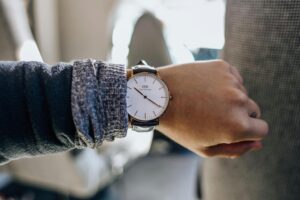Fake products don’t just appear out of thin air. They move through a carefully planned route, often spanning multiple countries, before landing in shops or online carts. Behind the scenes is a massive, hidden supply chain that powers this underground economy. And the numbers show just how real, and costly, it is.
According to the OECD, counterfeit goods accounted for about $467 billion in global trade in 2021. That’s 2.3% of all imports worldwide. In simple terms, that’s more than what most countries spend on national healthcare. So if you think this issue is just about knock-off sneakers or pirated DVDs, think again.
This blog breaks down how fake products are produced, moved, and sold, and why this matters for anyone who cares about buying or selling genuine products.
Step 1: Where Fakes Are Made, The Factory Floor
The journey begins in factories, many of them located in parts of Asia, Eastern Europe, and Latin America. Some are illegal from day one. Others are licensed facilities that moonlight as counterfeit hubs after hours.
There are real stories of workers from legitimate factories walking away with blueprints and setting up parallel units. Some are bribed. Others simply spot an opportunity. In many cases, the same machines that once produced branded goods are used to create fake ones the next day.
These factories often look legitimate, with assembly lines, clean packaging stations, and trained staff. But what rolls out of them is anything but genuine.
What’s less visible is the toll: these operations rarely follow labor laws, exposing workers to unsafe conditions and exploitative wages. And because there’s no oversight, environmental regulations are often ignored too. Toxic dyes, chemical waste, and energy-intensive production methods go unchecked, leaving behind harm that’s hard to trace but very real.
Step 2: How Fakes Move, The Distribution Web
Once the counterfeit items are boxed and ready, they begin their journey across borders. And this is where things get crafty.
Fake products aren’t shipped in big, obvious containers labeled “counterfeit shoes.” Instead, smugglers break them into smaller batches to dodge detection. The tactic, often called “smurfing,” allows multiple small shipments to pass through customs without raising red flags.
Some tricks they use:
- Forged documents that make fakes look like ordinary products.
- Re-routing shipments through several countries to hide their origin.
- Using Free Trade Zones (FTZs) where customs checks are minimal or delayed.
While governments are trying to catch up, the fake trade keeps adapting. U.S. Customs and Border Protection (CBP) alone seized over 32 million counterfeit items in 2024, reflecting just how widespread the issue is, and that’s only what they managed to catch.
Step 3: Where Fakes End Up, Marketplaces and Social Media
Now comes the part most people are familiar with: the sale.
You’re browsing online and see a popular product at half the usual price. The seller has glowing reviews, a professional photo, and even a money-back guarantee. Looks safe, right?
Not always.
Online marketplaces have made it easier than ever for counterfeiters to sell directly to customers. Some fake goods look identical to the original. Others are repackaged to hide flaws. A growing number of sellers use drop-shipping, which means they don’t even hold the product, they just pass your order to a third party who ships it directly from a factory (sometimes from another country).
Add to that:
- Fake reviews used to build trust.
- New seller accounts are made every few weeks to avoid detection.
- Flash deals and countdown timers to rush you into buying before you think too hard.
Even platforms with strong policies struggle to keep up. There are just too many listings, and the line between a gray-market seller and a counterfeiter isn’t always clear.
Step 4: Who’s Behind It, And Why It’s Bigger Than We Think
The real engine behind many counterfeit operations isn’t a lone seller trying to make rent. It’s organized crime.
These groups treat counterfeit goods like any other commodity. It’s easier to produce than drugs, carries less legal risk, and still brings in billions. In 2024 alone, organized crime groups were linked to 3,798 cargo theft incidents in the U.S., a 26% jump from the previous year.
They’ve started impersonating legitimate freight companies, hijacking shipments mid-transit, and re-selling the stolen goods. Experts estimate these crimes may be causing over $1 billion in losses annually.
This isn’t just a financial problem. It’s a safety issue, too. Fake products, especially items like cosmetics, electronics, car parts, or medicine, can seriously harm people. Some knock-off makeup products contain toxic metals. Counterfeit electronics can overheat or explode. And fake pharmaceuticals? That’s a risk no one should have to take.
Why Brands and Buyers Both Need to Be Alert
It’s tempting to think the fight against counterfeits starts at checkout. That’s the last step. But by that time, the fake product has already passed through multiple hands, each step adding a layer of trust to a false chain.
For brands, it’s a major reputation risk. A fake product can lead to angry customers, social media backlash, and legal headaches. Even worse, it can damage trust, especially if the customer doesn’t realize it was a fake and blames the brand for the poor quality.
For buyers, it’s often a mix of frustration and waste. You don’t get what you paid for. And if it’s a product you use on your skin, in your home, or around your family, it’s more than just a bad purchase, it could be a health risk.
And the problem keeps growing. Between 2020 and 2024, the value of seized counterfeit goods (based on their MSRP) rose by 95%. That’s not just inflation, it’s proof that more high-value fakes are making it to market.
What Can Be Done?
Stopping counterfeit supply chains isn’t easy, but there are ways to reduce their impact:
1. Early-Stage Authentication
Brands should think about protection at the manufacturing and packaging level, not just at retail. Secure labeling, QR codes, and tamper-proof seals help trace products back to their source.
2. Smarter Logistics
Shipping and logistics partners need to be trained to spot irregularities. Whether it’s duplicate invoices, weird routing, or mismatched labels, small flags add up.
3. Better Customs Cooperation
Customs officers are doing more, but they need help, technology, data sharing, and early alerts from brands can make a real difference in catching counterfeit shipments before they hit the shelf.
4. Consumer Awareness
People need to be educated on how to spot fakes and why they matter. Cheaper doesn’t always mean better, especially if it puts your health, safety, or finances at risk.
Where TruLux Fits In Fight Against Fake Products
At TruLux, we help businesses and authorities take control early in the supply chain, where it counts. Our inspection and authentication systems are built to catch fakes before they ever reach your buyers.
With tools like secure product verification, serial tracking, and automated inspections, we allow businesses to trace every unit and flag anything suspicious. Whether you sell supplements, skincare, electronics, or luxury goods, we make sure what reaches the customer is exactly what you meant to sell.
Because waiting until a fake hits your inbox or storefront? That’s already too late.
Conclusion
Fake products don’t appear by accident, they move through a well-built network of factories, smugglers, and sellers. The only way to beat this system is to stay one step ahead: before the checkout, before the shipment, and before your reputation takes the hit.
Stopping counterfeits isn’t just good for your bottom line, it also reduces waste from substandard goods and slows down the criminal networks that profit from fake trade. With the right tools, businesses and buyers can block fakes early, protect customers, and help clean up both commerce and the supply chain.
Image Credits: <a href=”https://www.freepik.com/free-ai-image/luxury-shine-diamonds-digital-art_262775220.htm”>Image by freepik</a>







